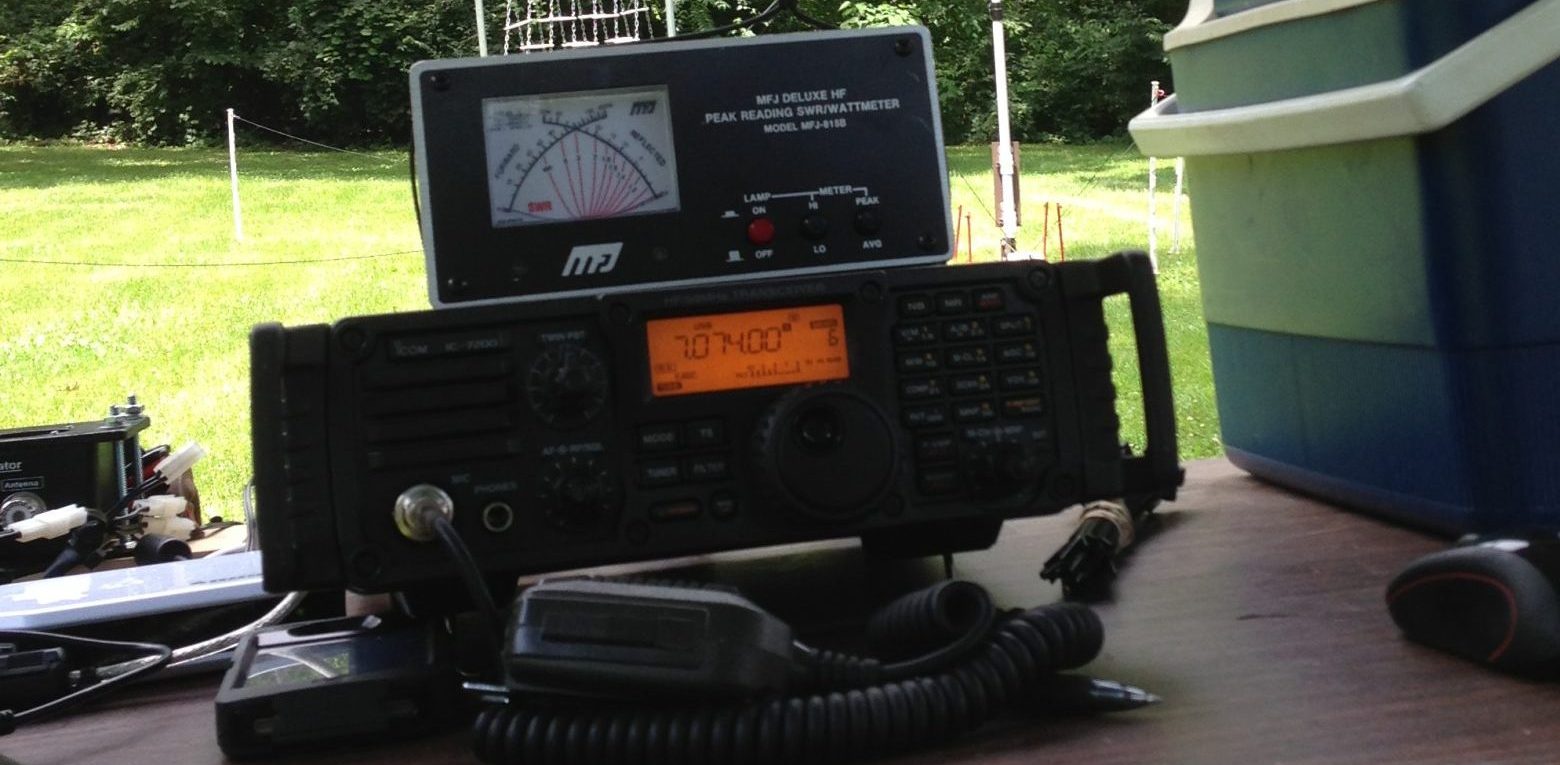A quick search of 1/4 wave stubs for passing or blocking a frequency will return tons of videos and websites. I’m the station trustee for the Sangamon Valley Radio Club and field day is coming, so are multiple harmonically related operations in close proximity (1000′ diameter circle). Over the decades we have ran anywhere from 2 all the way up to one huge setup (for us) of 11 transmitter setups. I miss our older CW operators as that is how we got that many transceivers on the air.
Back to the point…
I had been gifted several spools of 75Ω coax. So I figured, I have a couple of thousand feet of what appears to be RG-6 coax. Let’s experiment.
I needed to know a few things first
- Velocity Factor
- Electrical Length
- Physical Length
…and I needed to gather some tools
- NanoVNA (ala Sysjoint SV4401a) but any of the NanoVNAs will get the job done.
- Wire Stripper or utility knife to strip the coax
- Measuring Tape. I really like the Harbor Freight 100 ft. Open Reel Measuring Tape as it has Metric on one side thus saving me from having to do either conversions or fractions.
- Compression Crimper for F-Connectors
- F Connectors compression style
- Adapters to PL-259
Okay, all gathered…
First I need to know the Velocity Factor or Velocity of Propagation ratio of the coax in hand. Doing a search based on hard to read numbers on the coax said the Vf is 85% for the coax in hand. Some more internet research (how did I find this information as a child of the 70’s) tells me to calibrate my VNA and include the through and isolation.
Velocity Factor, Electrical Length, & Physical length, oh my!
- With your (properly calibrated) VNA of choice
- Connect the coax to both S11 and S21 on my VNA this is Port 1 and Port 2
- Turn off all the traces but one.
a. Set the Format for this trace to Phase.
b. Set the channel to S21 - This trace should provide you with a Saw Tooth Wave. Pick two adjacent peaks and subtract the higher frequency from the lower frequency. now divide 300/Frequency Difference = Electrical Length for this coax.
- Measure the physical length of your cable and then perform the calculation (Physical Length/Electrical Length) * 100 = Vf (Velocity Factor) in Percent.
- Now if you take the Electrical Length you want multiplied by the Velocity Factor you will be very close to the physical length you will need for your stub. Pad a few inches or centimeters for final tuning.
What to do with the information…
Now that I can reliably cut stubs to length and also use the S11 LogMag (that I failed to mention in this post) to see the effect of the stub. I can attempt to protect field day stations or other multiple station operations from harmonic interference.
Lastly…
I may not make a complete set of these stubs but I will be making some most likely an 80M shorted, 40M open & shorted, Below is my reiteration of others work or experiments on this. I have made enough and measured them to verify the results. An open quarter-wave stub attenuates the frequency it is cut for and odd harmonics.
| 1/4 λ Stub for Band | Open or Shorted | Passes | Attenuates |
| 160 | Shorted | 160 | 80/40/20/15/10 |
| 80M | Open | 40/20 | 80 |
| 80M | Short | 80 | 40/20/15/10 |
| 40M | Open | 20/10 | 40/15 |
| 40M | Shorted | 40/15 | 20/10 |
| 20M | Open | 10 | 20 |
| 20M | Shorted | 20 | 10 |
